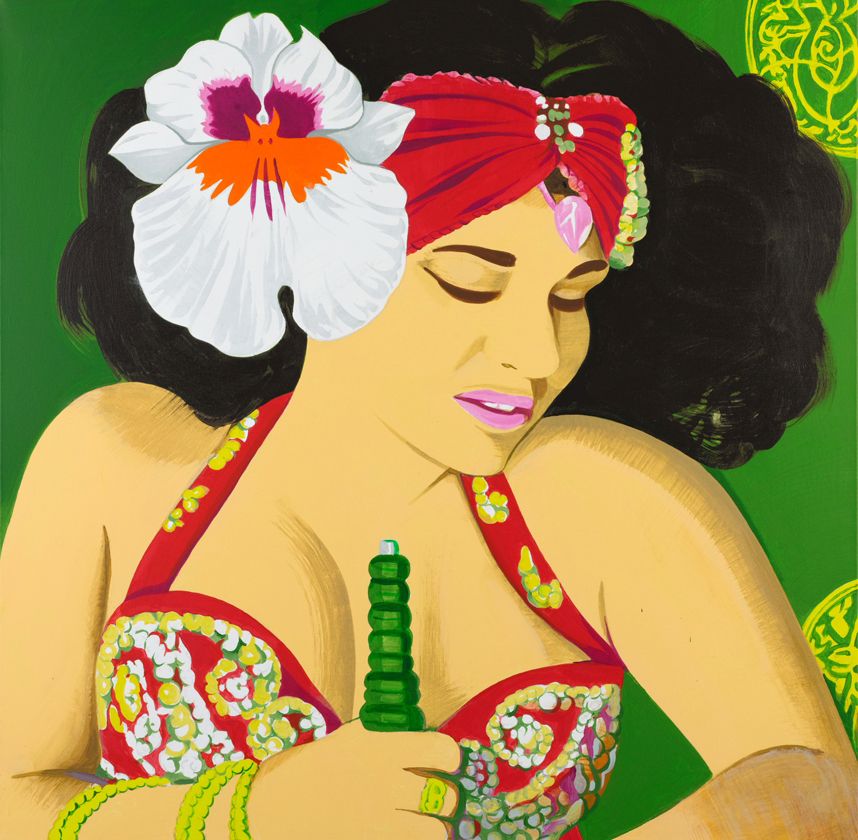Bernard Rancillac

Selected Works

Bernard Rancillac
Natacha Atlas, 2008
Acylique sur toile
110 x 110 cm
Some of the works depicted are no longer available.
Biography
A pioneer of narrative figuration, recognizable by his colorful palette, very politically engaged, he brought a renewed energy to the French art scene of the 1960s. Rancillac takes a sharp look at the world. His weapons: a colorful and realistic painting, willingly acidulous, nourished by numerous references.
Committed in his writings as in his painting against the capitalist system and censorship, Bernard Rancillac, known in particular for his posters and slogans of May 68, has always refused to be called a "political artist". One of his last monumental paintings, entitled Hell and Paradise, depicts several political figures, George Bush, Margaret Thatcher, Adolf Hitler and Saddam Hussein in a suggestive staging of the relationship between dictatorship and democracy.
The art market does not escape his critical gaze either. In 2015, during an exhibition at the Patinoire Royale in Brussels, he wrote in felt-tip pen "this is a fake" on two paintings presented as his, which gave rise to a trial.
After a childhood in Algeria and the Second World War, Bernard Rancillac studied drawing in France and did his military service in Morocco. He began painting while earning his living as a schoolteacher. In 1959, his first contract with a collector allowed him to leave teaching.
In 1961, the man who, at just 30 years old, became the winner of the painting prize at the Paris Biennale, freed himself from the fashions of his time by introducing allusions to comic strips, cartoons and cinema into his paintings, which became his trademark. We find Walt Disney characters, pin-ups and advertising logos in a jumble.
The year 1964 marked a turning point for the painter. He organized the exhibition "Mythologies quotidienne" at the Musée d'art moderne de la ville de Paris, with the painters Hervé Télémaque and Peter Foldès, where the notion of Narrative Figuration in painting appeared for the first time - a form of French Pop Art, satirical and virulent, shaking up an artistic scene then dominated by a lyrical painting that was out of breath. Like other representatives of the genre, Hervé Télémaque, Valerio Adami or Jacques Monory, Rancillac takes a keen look at the world. His weapons: a colorful and realistic painting, willingly acidulous, nourished by numerous references.
The art market does not escape his critical gaze either. In 2015, during an exhibition at the Patinoire Royale in Brussels, he wrote in felt-tip pen "this is a fake" on two paintings presented as his, which gave rise to a trial.
After a childhood in Algeria and the Second World War, Bernard Rancillac studied drawing in France and did his military service in Morocco. He began painting while earning his living as a schoolteacher. In 1959, his first contract with a collector allowed him to leave teaching.
In 1961, the man who, at just 30 years old, became the winner of the painting prize at the Paris Biennale, freed himself from the fashions of his time by introducing allusions to comic strips, cartoons and cinema into his paintings, which became his trademark. We find Walt Disney characters, pin-ups and advertising logos in a jumble.
The year 1964 marked a turning point for the painter. He organized the exhibition "Mythologies quotidienne" at the Musée d'art moderne de la ville de Paris, with the painters Hervé Télémaque and Peter Foldès, where the notion of Narrative Figuration in painting appeared for the first time - a form of French Pop Art, satirical and virulent, shaking up an artistic scene then dominated by a lyrical painting that was out of breath. Like other representatives of the genre, Hervé Télémaque, Valerio Adami or Jacques Monory, Rancillac takes a keen look at the world. His weapons: a colorful and realistic painting, willingly acidulous, nourished by numerous references.
In the second half of the 1960s, Rancillac increasingly used current affairs documents that he incorporated into his paintings. He dealt with the major political and social issues of his time, and attacked inequalities. He denounced American intervention in Vietnam, the poverty of what were still called "third world" countries, and fought against all forms of imperialism and discrimination.
Later, on his return from Havana, where he had participated in the exhibition "Le monde en question" in 1966, then in the Salon de Mai in 1968, he joined the Atelier populaire des beaux-arts in May 1968, in the heart of Paris. There, he created several screen-printed posters and slogans, some of which have remained famous.
During the 1970s, Rancillac gradually distanced himself from radical activism. This is evidenced by the evolution of his iconography, in which music appeared in 1974, with the series "Jazz", then, from 1985, the stars of American cinema: the Hollywood imagination would gradually replace political images. A resolutely popular painter, it was he who, in 1983, designed the poster for the Tour de France.
Later, on his return from Havana, where he had participated in the exhibition "Le monde en question" in 1966, then in the Salon de Mai in 1968, he joined the Atelier populaire des beaux-arts in May 1968, in the heart of Paris. There, he created several screen-printed posters and slogans, some of which have remained famous.
During the 1970s, Rancillac gradually distanced himself from radical activism. This is evidenced by the evolution of his iconography, in which music appeared in 1974, with the series "Jazz", then, from 1985, the stars of American cinema: the Hollywood imagination would gradually replace political images. A resolutely popular painter, it was he who, in 1983, designed the poster for the Tour de France.
